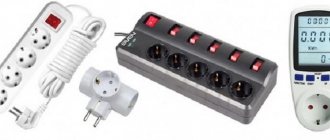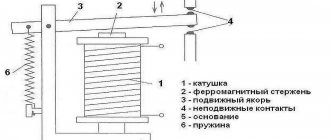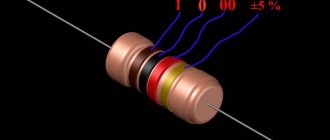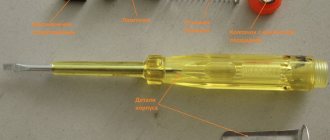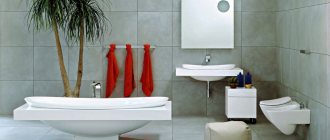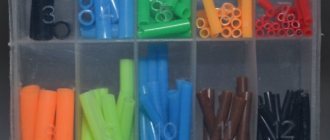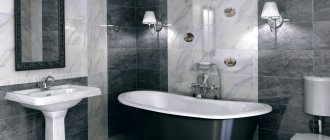History of development
Solar batteries began their development back in the 19th century. The prerequisite for this was revolutionary research on the transformation of solar energy into a more material component.
The first solar panels had an efficiency of only 1%, and their chemical basis was selenium. The first contributions to the development of such batteries were made by A. Becquerel, W. Smith, and C. Fritts.
But using only 1% of the total energy supplied to the solar panel is very little. These elements could not provide uninterrupted power supply to the equipment, so research continued.
In 1954, three scientists - Gordon Pearson, Darryl Chapin and Cal Fuller - invented a battery with an efficiency of 4%. It worked on silicon, and subsequently its efficiency was increased to 20%.
Currently, solar panels produce only 1% of the world's energy. They are mainly carried out to places that are difficult to reach for electrification. This power source is widely used in the space industry. Experts believe that all paths are open to such a battery, since solar activity is increasing every year.
In our latitudes, these batteries are installed in private homes to save energy consumption and care for the environment.
Overview of silicon-free devices
Some solar panels, made using rare and expensive metals, have an efficiency of more than 30%. They are several times more expensive than their silicon counterparts, but still occupy a high-tech trading niche due to their special characteristics.
Rare metal solar panels
There are several types of rare metal solar panels, and not all of them are more efficient than monocrystalline silicon modules.
However, the ability to operate in extreme conditions allows manufacturers of such solar panels to produce competitive products and conduct further research.
Cadmium telluride panels are actively used for cladding buildings in equatorial and Arabian countries, where their surface heats up to 70-80 degrees during the day
The main alloys used to make photovoltaic cells are cadmium telluride (CdTe), indium copper gallium selenide (CIGS) and copper indium selenide (CIS).
Cadmium is a toxic metal, and indium, gallium and tellurium are quite rare and expensive, so mass production of solar panels based on them is even theoretically impossible.
The efficiency of such panels is at the level of 25-35%, although in exceptional cases it can reach up to 40%. Previously, they were used mainly in the space industry, but now a new promising direction has emerged.
Due to the stable operation of photocells made of rare metals at temperatures of 130-150°C, they are used in solar thermal power plants. In this case, the sun's rays from tens or hundreds of mirrors are concentrated on a small panel, which simultaneously generates electricity and ensures the transfer of thermal energy to a water heat exchanger.
As a result of heating the water, steam is formed, which causes the turbine to rotate and generate electricity. In this way, solar energy is converted into electrical energy simultaneously in two ways with maximum efficiency.
Polymer and organic analogues
Photovoltaic modules based on organic and polymer compounds began to be developed only in the last decade, but researchers have already made significant progress. The greatest progress is demonstrated by the European company Heliatek , which has already equipped several high-rise buildings with organic solar panels.
HeliaFilm- type roll film structure is only 1 mm.
In the production of polymer panels, substances such as carbon fullerenes, copper phthalocyanine, polyphenylene and others are used. The efficiency of such photovoltaic cells already reaches 14-15%, and the production cost is several times less than crystalline solar panels.
The issue of degradation time of the organic working layer is acute. So far, it is not possible to reliably confirm the level of its efficiency after several years of operation.
The advantages of organic solar panels are:
- possibility of environmentally safe disposal;
- low cost of production;
- flexible design.
The disadvantages of such photovoltaic cells include relatively low efficiency and the lack of reliable information about the periods of stable operation of the panels. It is possible that in 5-10 years all the disadvantages of organic solar cells will disappear, and they will become serious competitors for silicon wafers.
Pros and cons of solar panels
A solar battery has its advantages and disadvantages. Let's look at them in more detail.
Pros:
- Highly environmentally friendly. During operation, no irreplaceable minerals are used and no waste is generated.
- No noise.
- Availability. Every corner of the globe is illuminated by the Sun.
- Consistency. If fossils can run out and their production decrease, then there is no need to worry about solar energy. According to scientists, nothing threatens our star for a long time.
- Wide range of uses. The panels can be used both in rural areas and in space.
- New technologies. Tests are being carried out on solar panels, huge amounts of money are being spent on their improvement, this area is constantly being modernized and undergoing innovation.
Minuses:
- Expensive. Not every person can afford to install enough solar cells to meet their needs. Electrification of a small country house will cost $1,000-1,200, while a two-story mansion can cost up to $10,000.
- Solar illumination is a variable unit. Battery efficiency will decrease at night and in cloudy weather.
Characteristics of silicon-based panels
Silicon for solar cells is made from quartz powder - ground quartz crystals. The richest deposits of raw materials are in Western Siberia and the Middle Urals, so the prospects for this area of solar energy are almost limitless.
Even now, crystalline and amorphous silicon panels already occupy more than 80% of the market. Therefore, it is worth considering them in more detail.
Monocrystalline silicon panels
Modern monocrystalline silicon wafers (mono-Si) have a uniform dark blue color over the entire surface. The purest silicon is used for their production. Monocrystalline solar cells have the highest price among all silicon wafers, but also provide the best efficiency.
Large monocrystalline solar panels with rotating mechanisms fit perfectly into desert landscapes. There are conditions for maximum productivity
The high cost of production is due to the difficulty of orienting all silicon crystals in the same direction. Due to these physical properties of the working layer, maximum efficiency is ensured only when the sun's rays are perpendicular to the surface of the plate.
Monocrystalline batteries require additional equipment that automatically rotates them during the day so that the plane of the panels is as perpendicular to the sun's rays as possible.
Layers of silicon with single-sided crystals are cut from a cylindrical block of metal, so the finished photovoltaic blocks look like a square rounded at the corners.
The advantages of monocrystalline silicon batteries include:
- High efficiency with a value of 17-25%.
- Compactness – smaller equipment area per unit of power compared to polycrystalline silicon panels.
- Durability – sufficient efficiency of electricity generation is ensured for up to 25 years.
There are only two disadvantages to such batteries:
- High cost and long payback.
- Sensitivity to pollution . Dust scatters light, so the efficiency of solar panels coated with it sharply decreases.
Due to the need for direct sunlight, monocrystalline solar panels are installed mainly in open areas or at heights. The closer the area is to the equator and the more sunny days it has, the more preferable it is to install this particular type of photovoltaic elements.
Polycrystalline solar cells
Polycrystalline silicon panels (multi-Si) have a blue color that is uneven in intensity due to the diversified orientation of the crystals. The purity of silicon used in their production is slightly lower than that of monocrystalline analogues.
Multidirectional crystals provide high efficiency in diffused light - 12-18%. It is lower than in unidirectional crystals, but in cloudy weather conditions such panels are more effective.
The heterogeneity of the material also leads to a reduction in the cost of silicon production. The purified metal for polycrystalline solar panels is poured into molds without any special tricks.
In production, special techniques are used to form crystals, but their directionality is not controlled. After cooling, the silicon is cut into layers and processed according to a special algorithm.
Polycrystalline panels do not require constant orientation towards the sun, so the roofs of houses and industrial buildings are actively used for their placement.
During the day, with light clouds, the advantages of solar panels made of amorphous silicon will not be noticeable; their advantages are revealed only under dense clouds or in the shade (+)
The advantages of solar cells with multidirectional crystals include:
- High efficiency in diffuse light conditions.
- Possibility of permanent installation on the roofs of buildings.
- Lower cost compared to monocrystalline panels.
- Duration of operation - the drop in efficiency after 20 years of operation is only 15-20%.
Polycrystalline panels also have disadvantages:
- Reduced efficiency with a value of 12-18%.
- Relative bulkiness - more space is required for installation per unit of power compared to monocrystalline analogues.
Polycrystalline solar panels are gaining an increasing market share among other silicon batteries. This is ensured by wide potential opportunities for reducing the cost of their production. The efficiency of such panels also increases every year, rapidly approaching 20% for mass-produced products.
Amorphous silicon solar panels
The mechanism for producing solar panels from amorphous silicon is fundamentally different from the production of crystalline photovoltaic cells. Here it is not a pure non-metal that is used, but its hydride, the hot vapors of which are deposited on the substrate.
As a result of this technology, classical crystals are not formed, and production costs are sharply reduced.
Deposited amorphous silicon solar cells can be mounted on either a flexible polymer substrate or a rigid glass sheet
At the moment, there are already three generations of amorphous silicon panels, each of which significantly increases efficiency. If the first photovoltaic modules had an efficiency of 4-5%, now second-generation models with an efficiency of 8-9% are widely sold on the market.
The latest amorphous panels have an efficiency of up to 12% and are already starting to appear on sale, but they are still quite expensive.
Due to the features of this production technology, it is possible to create a layer of silicon on both a rigid and flexible substrate. Because of this, amorphous silicon modules are actively used in flexible thin-film solar modules. But options with an elastic backing are much more expensive.
The physicochemical structure of amorphous silicon allows maximum absorption of photons of weak scattered light to generate electricity. Therefore, such panels are convenient for use in northern regions with large free areas.
The efficiency of batteries based on amorphous silicon does not decrease even at high temperatures, although they are inferior in this parameter to gallium arsenide panels.
At the same equipment cost, silicon hydride solar panels show greater performance than their mono- and polycrystalline counterparts (+)
To summarize, we can point out the following advantages of amorphous solar panels:
- Versatility - the ability to manufacture flexible and thin panels, mounting batteries on any architectural form.
- High efficiency in diffused light.
- Stable operation at high temperatures.
- Simplicity and reliability of design . Such panels practically do not break.
- Maintains performance in difficult conditions - less drop in performance when the surface is dusty than with crystalline analogues
The service life of such photovoltaic cells, starting from the second generation, is 20-25 years with a power drop of 15-20%. The only disadvantages of amorphous silicon panels include the need for larger areas to accommodate equipment of the required power.
Battery contents
A lot of people have the wrong idea about solar panels. After all, the roof panel itself cannot provide alternating current.
To provide your home with electricity, you will have to purchase:
- Actually solar panels. This is the structural element that is attached to the walls or roof of the house. When a quantum of sunlight hits the silicon crystals, they begin to vibrate and an electric current is created.
- Battery. The energy that is not used for household consumption is accumulated in this device, and then at night or in inclement weather it is consumed.
- Voltage controller. This element is not mandatory, but desirable. It increases the battery life, reports its extremely low and high charge.
- Inverter, or energy converter. In a battery, the electric current is constant, but for domestic needs an alternating current is required. The inventory manager performs this transformation.
As we can see, solar panels are only a small part of the system. They themselves consist of smaller elements - modules. Since the device of these batteries is modular, if necessary, by connecting components you can add panels or remove unnecessary ones.
Types of solar panels
A solar panel consists of components, and they can be different:
- monocrystalline;
- polycrystalline;
- film.
In the first case, one photocell is one silicon crystal. These batteries have the highest efficiency (up to 25%), but they are very expensive. The plates are deep blue in color and their edges are slightly rounded.
Polycrystalline solar cells combine several silicon crystals. They are widespread, their efficiency fluctuates around 20-23%. The structure is heterogeneous, and they absorb sunlight worse than monocrystalline panels. They are more affordable in price.
Thin-film (amorphous) photocells involve sputtering a semiconductor onto a substrate. The main advantage is that they can be placed on literally any surface, they are flexible. The disadvantage is low performance.
According to the technical principle, electrification with solar cells is divided into:
- open systems;
- closed systems (autonomous);
- combined.
An open system is called when the solar panel is connected to the general power grid. In this case, there is no need to purchase a battery and a controller. Solar panels are connected to the general network using an inverter. If the power consumed by household appliances does not exceed that produced by the panels, then no current is taken from the general electrical network. In the case when you turn on high-power devices and the batteries cannot supply them with current, electricity is taken from the general network. The peculiarity is that if there is no current in the main network, the batteries will not work.
With autonomous systems, everything is clear: they are closed and do not require an external network. Energy is stored in the battery and used as needed.
Combined networks are not widely used because they are expensive. The complex design combines the type of open and closed system. If there is excess electricity generated by batteries, it can be redirected to the general grid.
Which solar panel to choose?
The choice of solar panels for country houses at a latitude of 45-60 ° is not difficult. There are only two options worth considering here: polycrystalline and monocrystalline silicon panels. If there is a shortage of space, it is better to give preference to more efficient models with one-sided crystal orientation; if there is an unlimited area, it is recommended to purchase polycrystalline batteries.
You should not rely on the forecasts of analytical companies for the development of the solar panel market, because the best examples of them may not have been invented yet
It is better to choose a specific manufacturer, the required power and additional equipment with the participation of managers of companies involved in the sale and installation of such equipment. You should know that the quality and price of photovoltaic modules from the largest manufacturers differ little.
It should be taken into account that when ordering a set of turnkey equipment, the cost of the solar panels themselves will be only 30-40% of the total amount. The payback period for such projects is 5-10 years, and depends on the level of energy consumption and the possibility of selling excess electricity to the city grid.
Application of solar panels
In addition to astronautics and providing private homes with electricity, solar panels or batteries are used in the following areas:
- Automotive industry. Eco-friendly transport is gaining popularity, because gasoline and gas emissions pollute the atmosphere, and fuel prices are constantly rising. Solar-powered cars can reach speeds of up to 140 km/h.
- Operation of water transport (barges, boats, yachts). Such transport can be found in Turkey. The boats develop a low speed (up to 10 km/h), and this allows tourists to explore the sights and magnificent landscapes of this country.
- Energy supply of buildings. In developed European countries, many municipal buildings and structures fully meet their needs using the energy generated by solar panels.
- Aircraft manufacturing. Thanks to the presence of batteries, the aircraft can not consume fuel for a long time in flight.
What to look for when buying solar panels for your home
This information will be useful if you decide to switch to a solar energy source. When purchasing all the components for such a system, you need to know where you can save money and what to pay special attention to:
- Buy components (panels, battery, inverter) in late winter and early spring . As a rule, stores offer big discounts at this time.
- Don't buy too many solar panels at once. Remember that this system is modular, and it is very easy to get the required quantity to meet the needs of household appliances.
- It is advisable incandescent lamps with LED or LED . They consume less energy and have a longer service life.
- , purchase solar batteries with an output voltage of 12 V. These are the values that are suitable for household appliances; very few devices use 24 V and 48 V. You can find all voltage indicators in the device datasheet.
When choosing solar panels, please note that each one must be placed in a protective aluminum housing. This metal is lightweight, durable, and corrosion resistant. The protective glass on top should be matte, without any gloss or glare.
It is quite possible to provide your home with comfort, warmth and not pay for electricity. To do this, you need to install such a power supply system. But it is worth considering that it also requires significant investments and has a number of nuances. After studying all the positive and negative aspects, we hope that you will make the right choice.
